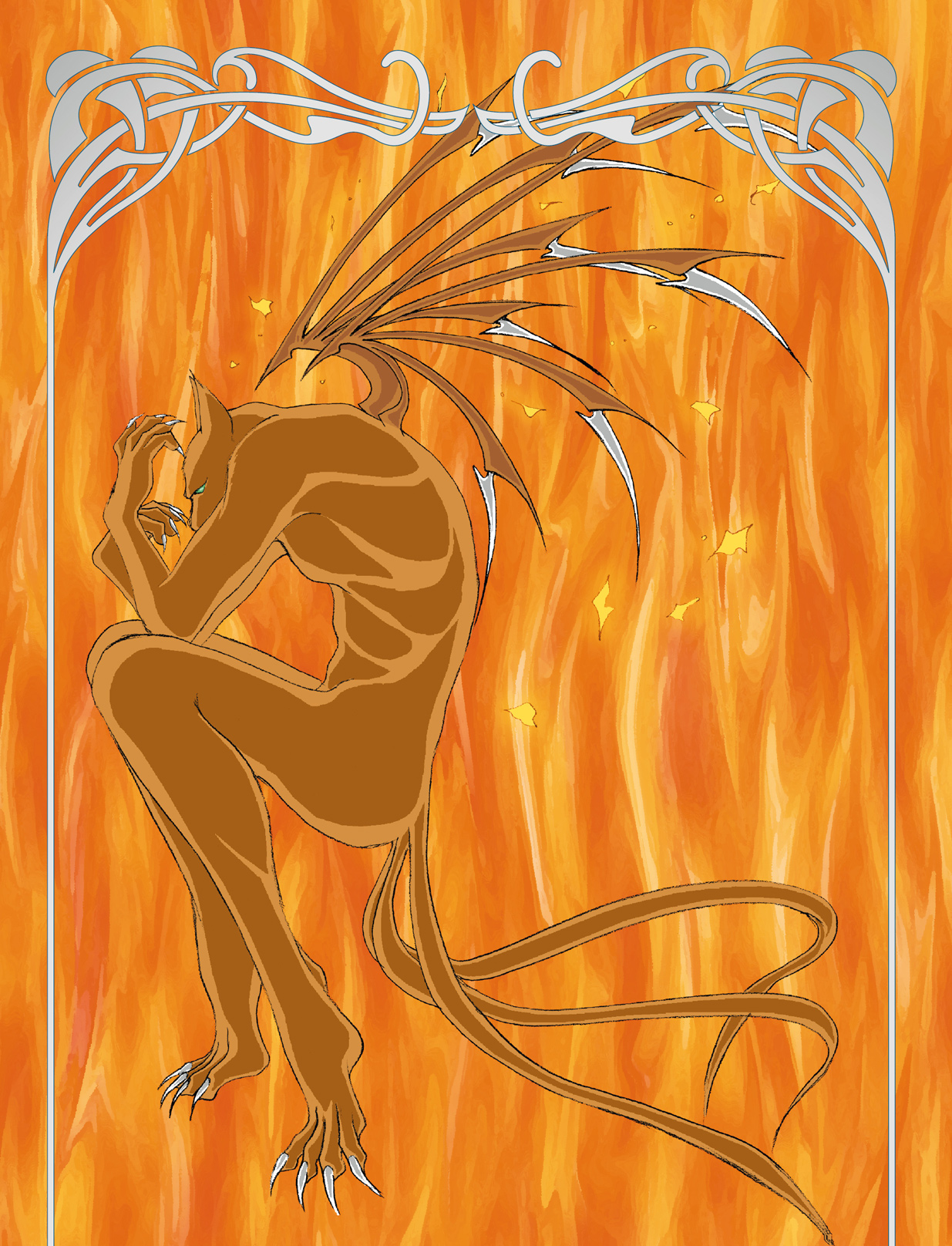
One of the aspects of occult and horror that’s so unsettling—and downright scary—is that you don’t know whom to trust. The person you’re talking to—whether it’s your best friend, true love, or mentor—could be an illusion hiding a hideous creature that comes out when the moon is full to kill and kill again.
Whatever the starting character and end result, the morphing of manga occult characters could take place in the blink of an eye; in one panel the character could be normal and in the next a demon. But that would be shortchanging the audience. Here’s the thing I want to get across: As a manga artist, you want your audience to be uncomfortable. Think about it. Would you design a haunted-house ride so that no one got scared? What would be the point in that? So, take your time; stretch the transformation across several panels. Slow it down. Let’s really see it. We want the audience to say to themselves, “My god! Is that really the character that I like—that terrible creature?” That’s a good reaction. The one we want.
Animals, such as cats, don’t have to be drawn realistically. We’re not talking tabby cats here. You can make up your own. They can start off cute and cuddly or vicious, like bobcats. The wilder and more dangerous they are, the more effective they are for female transformations. This is because occult bad-girl character types are driven by wild animal instincts. The good-girl types are moral and civilized.




Some transformation are prompted by an event, such as a full moon. Others are the result of the whim of the creature itself, as is the case with the vampire, who turns into a bat in order to fly away after gorging on human blood. Some characters will turn into creatures in order to kill.
MALE VAMPIRE METAMORPHOSIS
The Baron is charming, gracious, and handsome. Unfortunately for the women who fall for his charms, he is also a poisonous bat whose bite causes his victim to spiral into the bottomless blackness of the undead. Let’s see him as he really is, unvarnished, in his true form.


The fingers grow long spines on which the wings will form. The feet elongate and will eventually mimic the batlike feet of rats. The hair and eyes become wild. The vampire is inwardly focused at this moment, all of his energy reined in and focused on the metamorphosis. If the victim is to escape, it must be now. Her time is limited.

The bat emerges as the clothes shred and are blown into the wind. More bat than human, the vampire is still double the size he will be when the change is complete. As he begins to emerge from the transformation, his entire demeanor becomes feral, aggressive—there’s nothing “human” left in his heart from before. He would kill his former love if he had the chance. He is totally consumed by his new form. This is the tragedy of the horror genre.

In the final form, the vampire bat can fly, flee, or stay and attack. The chains he wears are a symbol of the eternal damnation to which he is tethered and from which he can never escape, except through death.
A seductive look brings the stupid males of the species closer, like a black widow spider offering an invitation to a suitor.
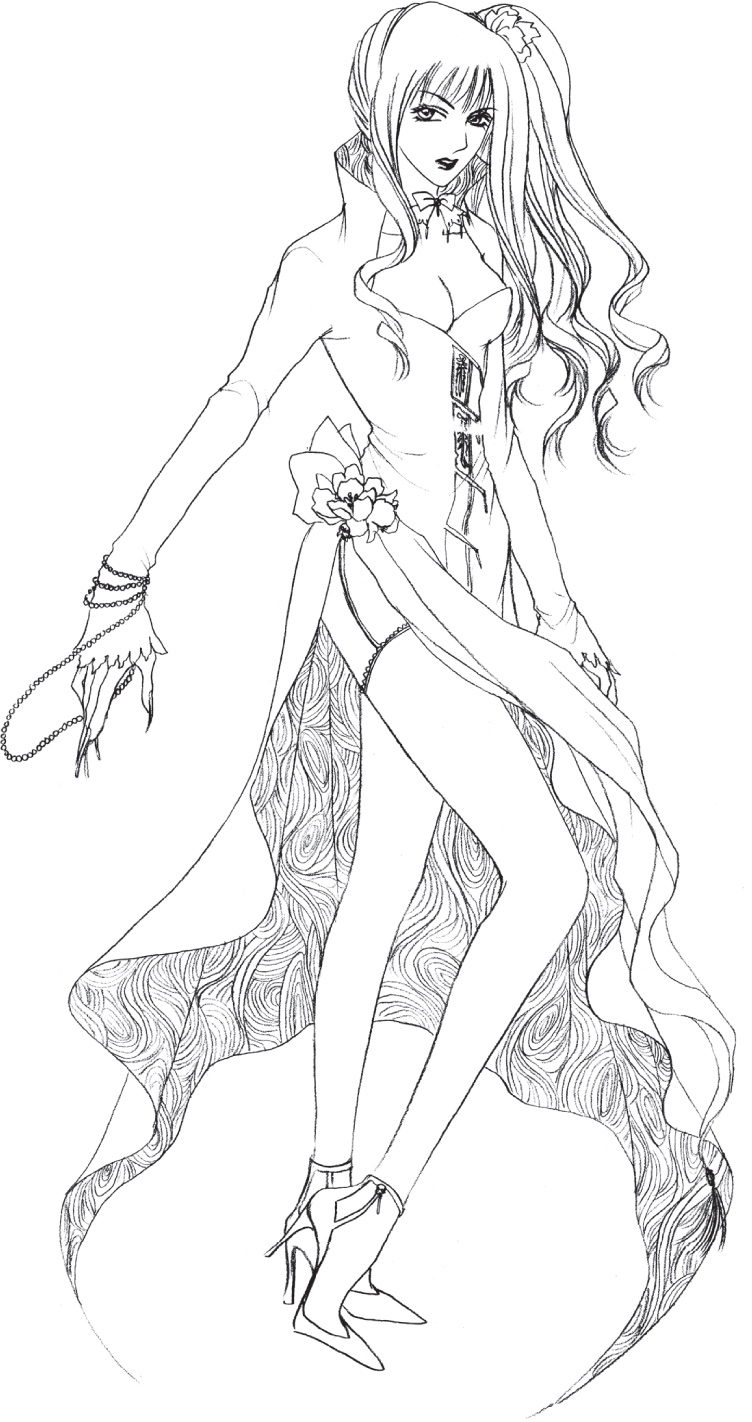
Unlike the male vampire, when a female vampire begins her transformation, she looks enraptured, keeping her feminine mystique to set up the surprising next step and to avoid frightening off her victim.

Still beautiful, but weird things are starting to happen.

Suddenly, the beauty fades and the hideous vampire reveals herself with stunning abruptness—an effective technique. Note her arm position: She’s no longer a coy, flirtatious female, but rather a domineering villainess bent on destruction.
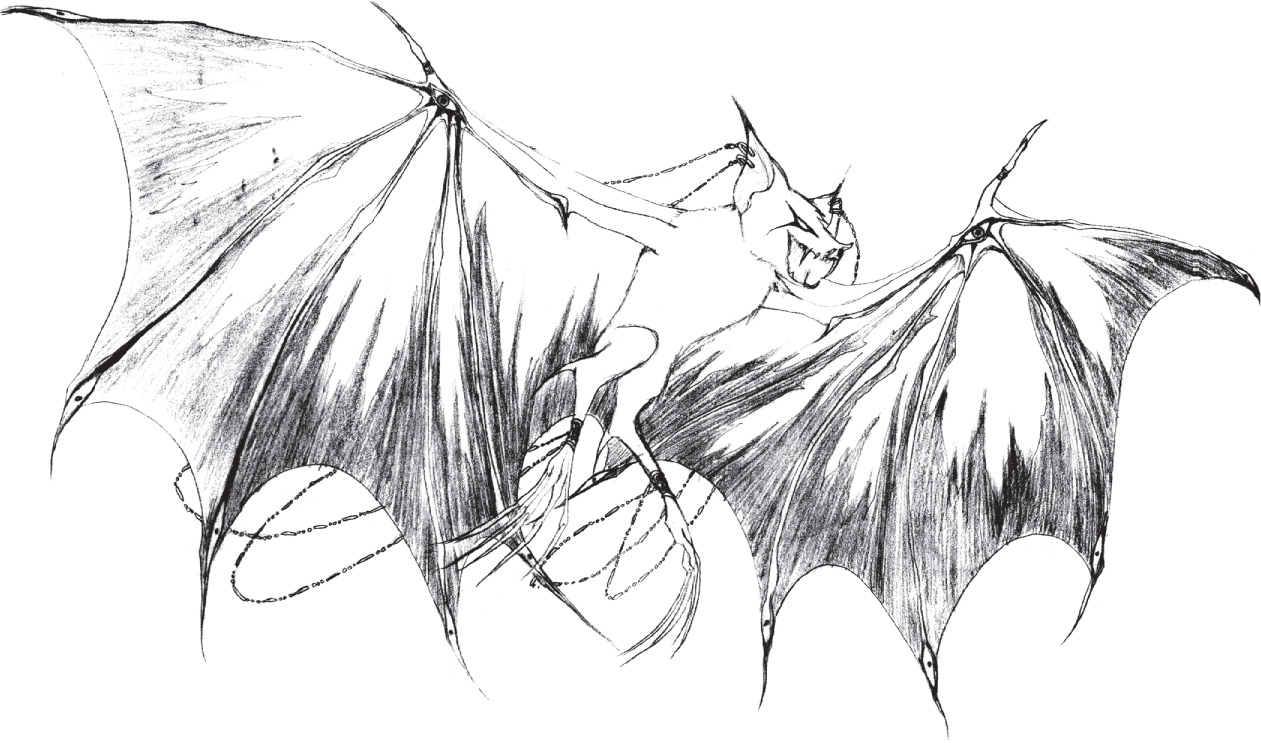
In the final stage, darken the wings toward the bottom where the spikes are. This is an effective technique that gives all wings a more gothic look.
Remember, this is manga, not American, horror. So, the characters are not going to turn into Lon Chaney with wolf makeup. Manga is keen on taking traditional characters, such as wolves, and putting a fresh spin on them to create new, imaginative beasts. These two creatures are good examples of this—regular werewolves they’re not.
MALE WOLF METAMORPHOSIS
This haunted young prince will transmogrify into a wolf-demon with devil wings. (Demons are very popular in manga and anime.)

Note the princely (read Prince of Darkness) robe.

Sometimes, especially with characters who turn into wolves, the transformations surprise even the transformed.

Clothes shred and fly off the character as animal joints appear. But, the character still retains quasi-human posture.

The final form offers a fresh interpretation of a werewolf, not an ordinary, run-of-the-mill werewolf.
Cat girls are a popular manga character type. They’re friendly characters. So, we play a trick on readers to reel them in and then surprise them: We start the transformation by turning the occult woman into a cute cat-girl. Then we lower the boom. POW! She transforms further into a hideous creature, a real shocker—she’s not the cutie we thought she was at all! In the end, she assumes her true identity for all to see: a vicious, winged, wolf-beast.

She starts as a typical occult goth beauty …
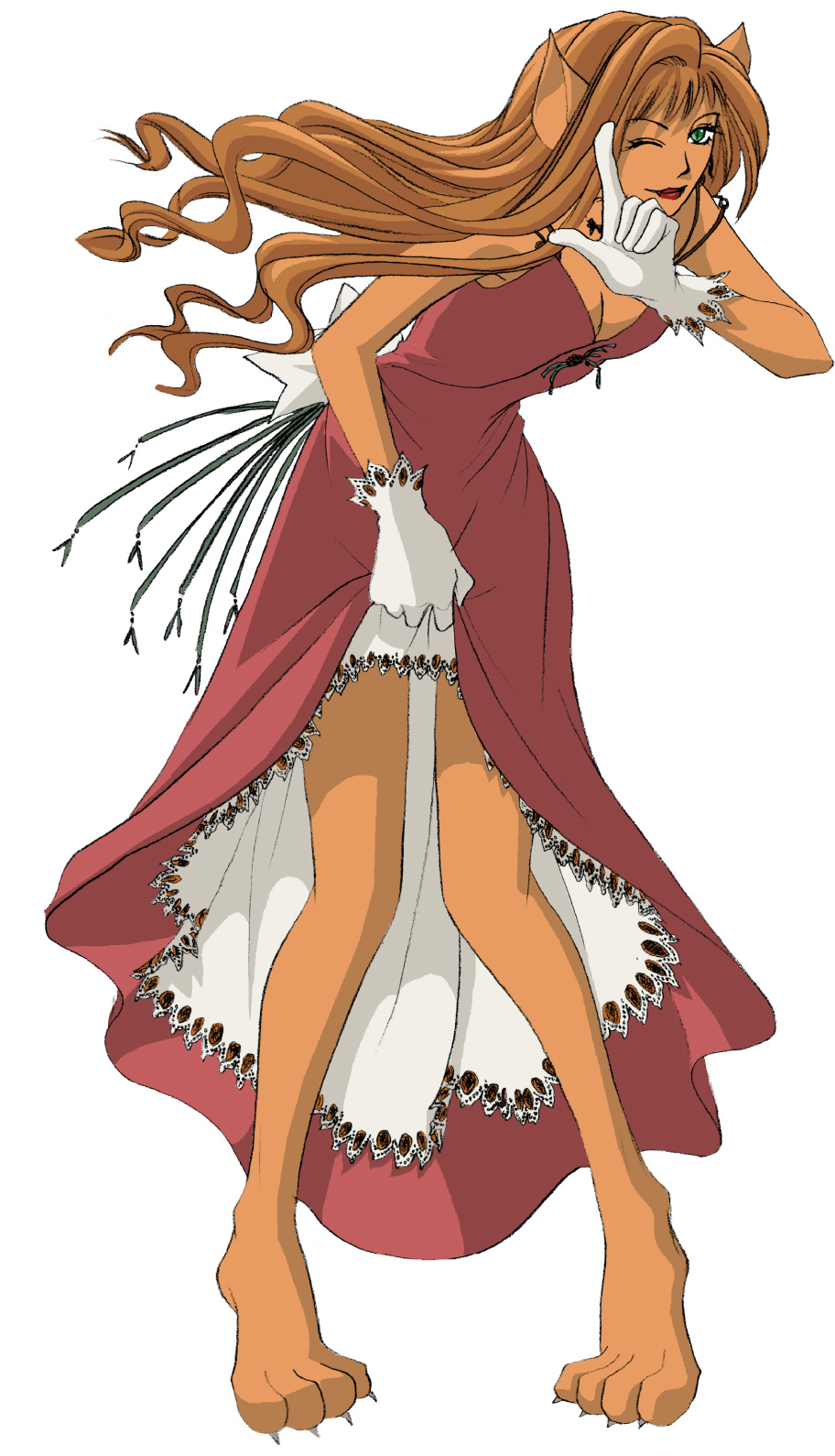
… and turns into a nonthreatening cat girl. This lures readers into thinking she’s going to remain pretty and friendly.

Then comes the surprise change (not so pretty anymore) …

… before the final beast emerges.
Another cool way of showing a transformation is to begin by having the character bunch up as the change starts. Then, once the character transforms, he suddenly pops open, presenting himself and his startling new look to the audience.
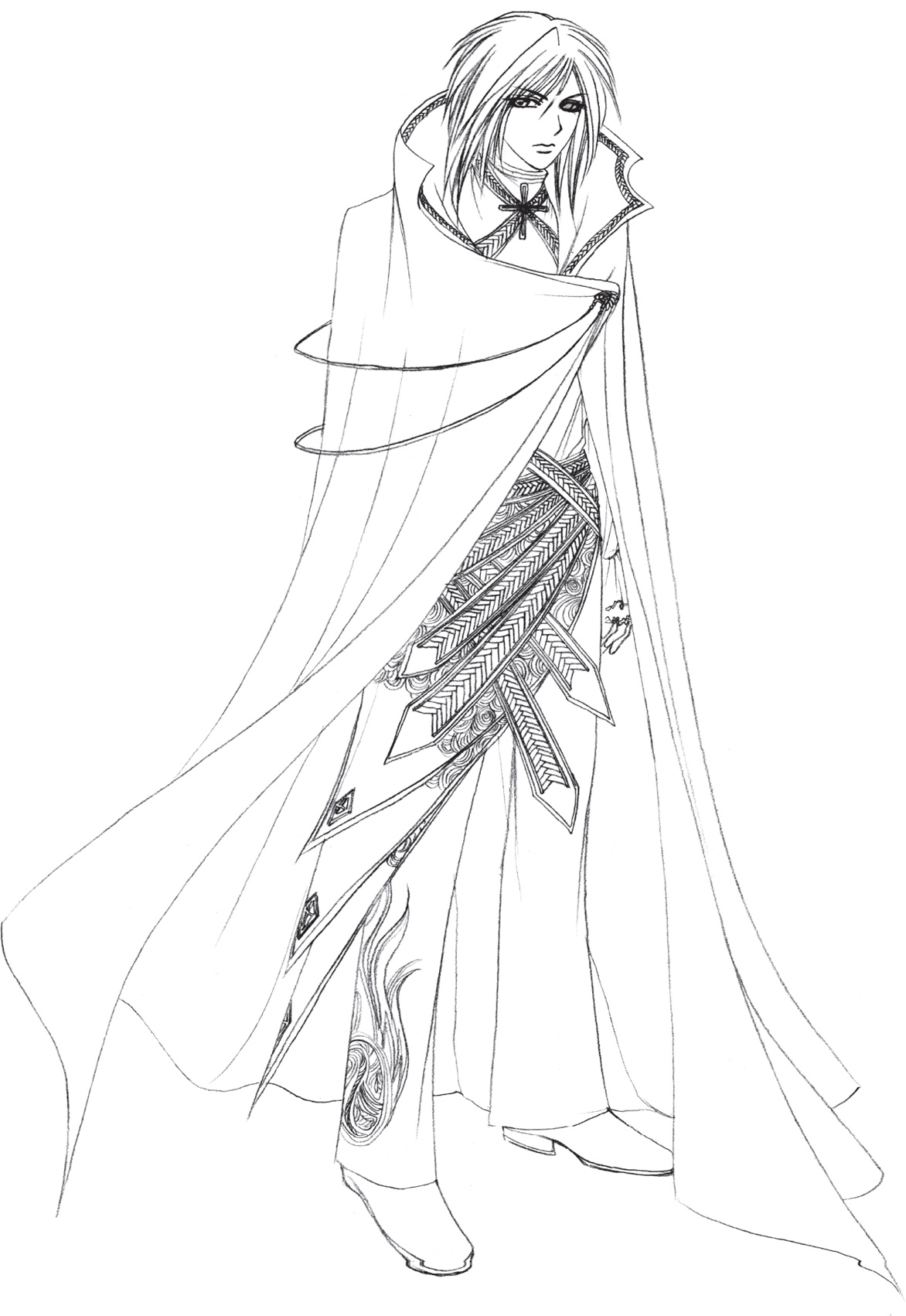
Note that inward-looking, turbulent characters are what make manga occult relatable to teen readers.

Have the figure start to close up as the process begins.
The figure coils up and assumes an infantile position so that he can be “reborn” in a new form.

The figure then springs open in this new form and agressive stance: the half-panther/half-dragon—not something you want to bring home from the pet shop.
At some point in every good story, the author or artists makes use of the element called the twist. We’re familiar with the way conventional story lines go. If we read a familiar story, even if it’s illustrated with well-drawn characters and interesting settings, the experience is likely to leave the reader underwhelmed. To make your characters memorable, you sometimes need to add an unexpected twist to make them less predictable and to make them stand out in the reader’s mind.
How do you do that? By making them uglier, grosser, more violent? Maybe, but hasn’t that been done before? And isn’t that a bit obvious? Perhaps you can be more clever in going about it. Maybe you can add a character who’s a bit different from what you’d expect—not just more of the same.
For example, this girl is an occult character, but she’s not evil. And the panther into which she transforms—although certainly powerful and intimidating—can be on the side of good. It has a unicorn-style horn on its forehead, which we generally associate with positive traits. Its posture is defiant, not vicious. The reader was expecting a transformation into a vicious, evil occult character. But here she is, transforming into a creature that’s still on the side of good, taking a stand against the darker forces in her own world. Suddenly, you’ve got the makings of an interesting story. And that’s good storytelling. But use such iconoclastic characters sparingly, because you don’t want to undo the genre itself.

For a “good” character, the face is sweet and innocent, and the clothes are gothic but are done with a lighter touch and more frills and bows.

One of the first hints that a transformation is taking place is the change in posture from human to animal. Don’t leave out this crucial step.

Since this won’t be an evil character, the limbs and joints are softer in appearance than they would otherwise be. The downward-looking eyes offer a gentle expression.
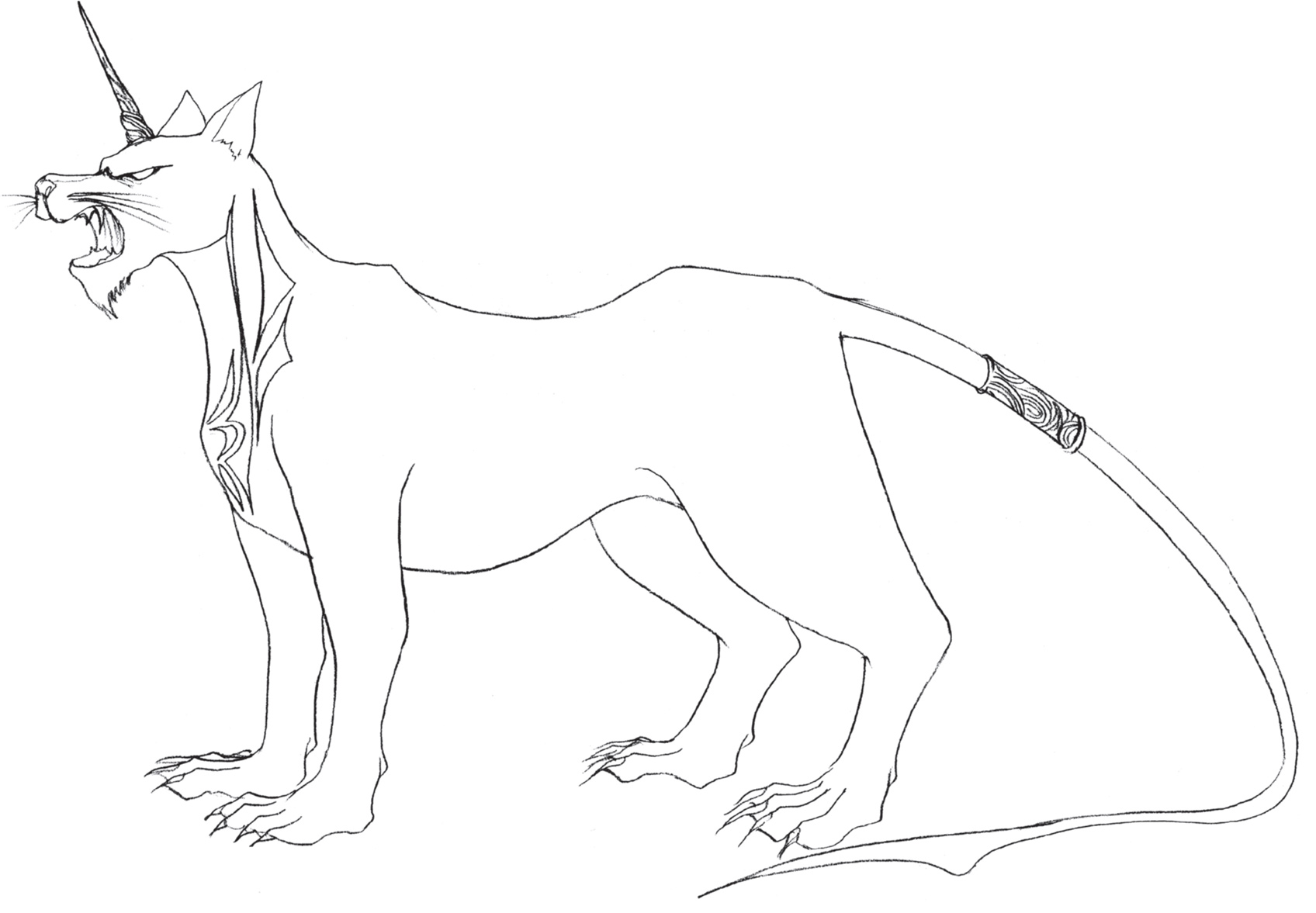
The final character is a majestic beast that will stand its ground against those who wish it, or its friends, harm.
Artists often plant devices to tip off the audience about what’s coming. It’s not so much to tease the reader, making this a parlor game, as it is to put the audience in the right mood. To do this, artists use visual metaphors or symbols. For example, what does a dragon have to do with this dark fellow? Well, ask yourself, What’s the most prominent feature associated with dragons? Fire-breathing. And here is a man holding a candelabra teeming with flames. See the connection? It all comes together once he transforms. We begin to think of his candelabra as part of the dragon motif that remains when he’s in human form. He likes to be around fire.
Another cool visual metaphor would be to invent a woman who turns into a snake. When she’s in human form, she wears a long dress that winds around people in a serpentine way as she seduces them.


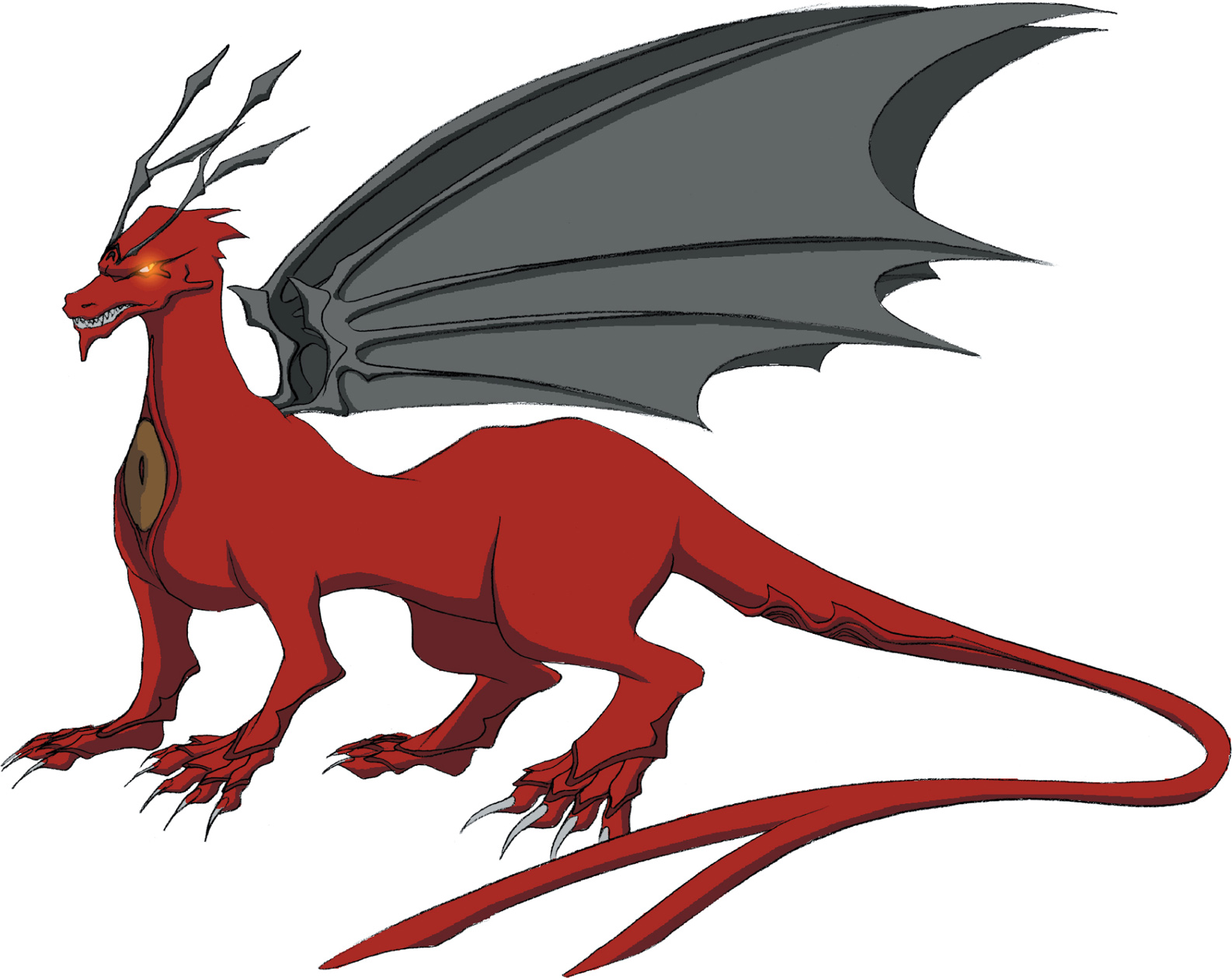
Strange, magical forces sometimes provoke transformations: a bite on the neck, a potion from a chalice, or the sweet pollen from an exotic black rose. They can be slipped unknowingly to the victim so that the victim’s soul is taken from her before her very eyes—a most frightening event—as she watches her own unholy mutation from good to evil. Conversely, the transmigration of the soul can be volitional, perhaps even part of a ritual between lovers destined to rule together in darkness forever.

A silver chalice is a well-established prop for delivering a secret potion that will trigger a dark transformation.

Once the potion is taken, there is no return to the land of the living. Note: Swirling objects are very important in transformations; use what’s available in the drawing (hair, clothes), or if nothing lends itself to this motion, draw energy lines swirling around the figure.
As the soul migrates from light to dark, so does the form.

Draw the spines of the wing along a diagonal with the longest spine at the top and the shortest spine closest to the body.